I would like to thank Frank at Dutch Goes the Photo for his Tuesday word prompt, crawl. It allows me to post about something near and dear to my heart. Yes, I know. Everything is near and dear to my heart, but that can’t be a bad thing surely? You have probably all seen the news this week about a recent insect study review. The review found that insect numbers have plummeted, experiencing a 2.5% loss per year. Now one can argue about the rate of decline, whether it can be applied uniformly across the globe and to all insects, but one thing is clear, our insect population is in trouble.
The study attributed the decline in insect numbers mainly to intensive agriculture and associated pesticide use, but also acknowledged the problem is likely to be multi-faceted. Scientists also suspect climate change and human impact (such as habitat loss) is contributing to the decline of insect populations. More research needs to be done. I imagine that there are many feedback loops that we can’t yet anticipate or measure and that the rate of insect decline will accelerate rapidly in coming years as the drivers of change overlap. I am cognisant that there is a paucity of insect studies, but there is sufficient evidence now on adverse impacts on agricultural productivity from collapsing populations of beneficial pollinating insects, not to mention concerns about insecticide use for human health, for us to be worried. I think it is fair that we question the existing data, but we should also be investing in addressing the information gaps. We should be equally skeptical of claims made by those with a vested interest in maintaining the status quo. In her book, Silent Spring (1962), Rachel Carson wrote:
“When the public protests, confronted with some obvious evidence of damaging results of pesticide applications, it is fed little tranquilizing pills of half truth.”
Sound familiar?
There is a lot that we can do. Money talks. We can buy from growers that have adopted sustainable agricultural practices (ie. no insecticide). We can advocate for increased public research funding into human impact on insects. We can protect natural habitats and incorporate them into agriculture farmland, and we can eliminate insecticide use in our own gardens. I use no insecticide (not even organic pesticides). It is tough; my yields aren’t huge. But we get enough relative to the small number of plants we grow. Zucchini anyone?
Anyway, enough lecturing; this post is meant to be about the photos. I thank my family for photos they took of the insects of the alpine and sub-alpine areas of Australia.
I’m in love with the alpine metallic cockroach (Polyzosteria viridissima).
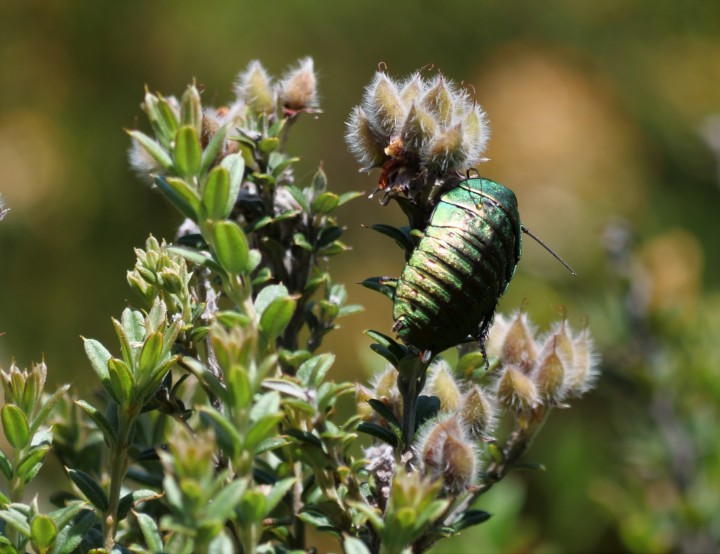
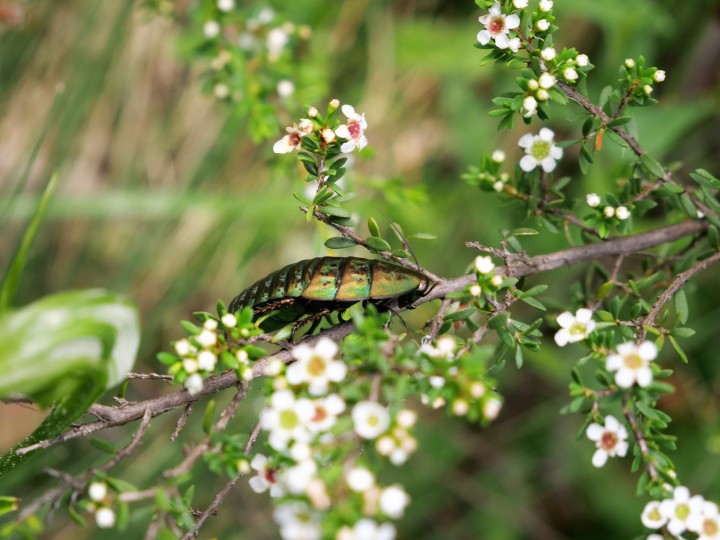
And the mountain katydid (Acripeza reticulate). At ease, if you please.

Now that is alarming (literally).

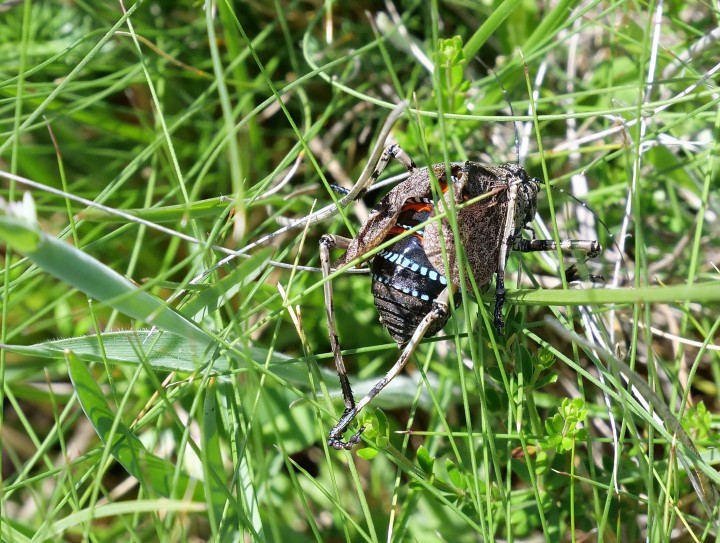
Something has outgrown its skin.

Could it be a Southern Pyrgomorph (Monistria concinna)?
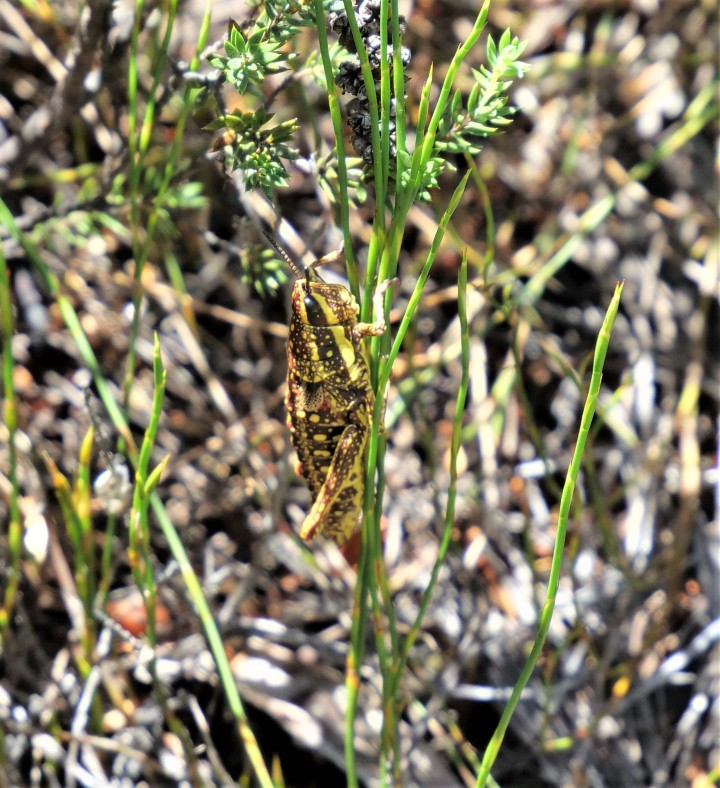
No idea what this one is. But it is so cute, don’t you think?

The crane fly (with vanilla lily in the background) is quite spectacular and human friendly. It doesn’t suck blood, sting or bite.

Even flies pollinate. This lovely native greenhood orchid doesn’t mind.

Technically not an insect but an arachnid, this lovely enamel spider glints in the sun.
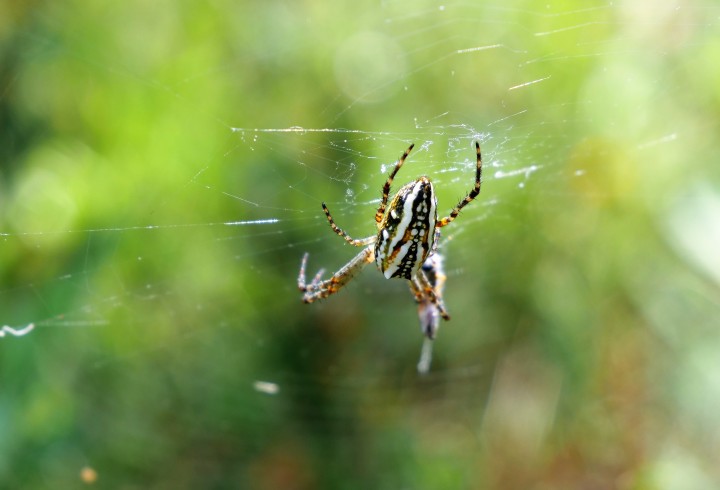
Now if there are any Aussies who live in alpine regions reading this, can you please let me know whether the bogong moths have arrived this year? I have seen none pass through Canberra on their 1000 km migration to the Australian Alps and I am a little worried that there will be too few this year for the mountain pygmy possums who rely on moth protein to fatten up for the winter hibernation.
Looking forward to hearing from you.
Kind Regards
Tracy
See here for a media report on the review.
Thank you for sharing this post! I read myself in a BBC article if I recall correctly about the decline of insects. It’s so very scary since nature seems to be losing its balance! Take care and have a great weekend. MZ
LikeLiked by 1 person
Hello MZ, thanks for dropping by. It is scary, but knowledge is power. Or so I’ve been told. 🙂 Hope you have a great weekend too. Regards. Tracy.
LikeLiked by 2 people
It is indeed very worrying news (are there any other?) regarding insect population, Tracy. Most people of course are focused on the wellbeing of bees which admittedly should be of the greatest concern for us humans. But like you said, flies are also pollinators as are a million of other creepy crawlies. Even spiders are useful – don´t tell them I said that because I really, really hate spiders! 😂
And I would never have thought that I´d say this: but that metallic cockroach is beautiful!! 🙂
LikeLiked by 1 person
I know, Sarah. All the bad news makes my heart hurt. I love spiders, but I’ve got a bit of rat phobia, so your rat photo was rather challenging to me, but I could see how sweet they were. 🙂 I’ve turned into the fan of the cockroach now. Well, at least some of them anyway. Take care and have a good weekend.
LikeLiked by 1 person
As long as the rats stay outside in the park I don´t mind them. If I have even a mouse in my home, I turn into a silly 1950´s cartoon character of a woman an jump on the next stool or table! 😀 I actually kind of do that with spiders too. 😉
LikeLiked by 1 person
I can relate to that, Sarah. I’m a bit of a sissy sometimes too. I need to warn you that there may be some spiders in future posts. My children taught me to like them. 🙂
LikeLiked by 1 person
Thanks for the heads-up, Tracy! 😉 I will start bracing myself! 😀
LikeLiked by 1 person
Welp, the great die-off will get around to humans and the planet will be better off. Funny how Mother Nature does her self-care.
LikeLiked by 1 person
Yep, as apex predators, we depend on a healthy food chain.
LikeLiked by 2 people
I love the metallic cockroach. It almost makes that creature endurable (had enough roaches in China) My favorite bug of all is the fig eater beetle. She was everywhere in San Diego and seemed to like my lawn mower. Whenever I mowed, she would keep me company flying around my head. https://en.wikipedia.org/wiki/Figeater_beetle
LikeLiked by 1 person
Yeah, cockroaches have redeemed themselves in my eyes. Your fig eater beetle is just gorgeous, and good for the environment. My dogs would find them very tasty I’m sure.
LikeLiked by 1 person
I really miss those beetles here.
LikeLike
PS. I will be printing a correction to my statement on oxygen levels during carboniferous period, which I got completely wrong according to my geologist husband. Can’t trust these bloggers (except you, Martha, or Lamont and Dude).
LikeLiked by 1 person
I wouldn’t trust Lamont with anything factual. He’s been around so often with so many different brains and their various capacities that he’s not reliable at all.
LikeLiked by 1 person
🙂
LikeLike
Glimmers of hope! It seems that bed bugs are developing a thicker skin that is more resistant to pesticides. Also a plan is underway to plant more milkweed to feed the caterpillars of the monarch butterfly, in their summer range. The monarchs fly 3,000 mile each year from their summer range to their winter range in Mexico. Google photos of the monarchs covering trees in their winter range.
LikeLiked by 1 person
Well that is welcome news about the bed bugs, Sid. You cheer me up. 🙂 I will check out those Monarchs too. The Monarch and the Bogong moths are similar in that they are the only two insects to use the magnetic fields to navigate. PS. I got the oxygen levels completely wrong in the carboniferous period according to my geologist husband. So I deleted the reference. Please feel free to tell me if I get it wrong.
LikeLike
Wow! Those are some pretty weird looking creatures, Tracy. Well captured!
LikeLiked by 1 person
Thank you, Sue. I’ll pass your compliment on to my lads as they took the photos.
LikeLiked by 1 person
There’s a fascinating world to be discovered if we’d only bend our backs and knees!
LikeLiked by 1 person
There certainly is, Dries. I wasn’t involved in that trip though. Strictly for the lads as it would have been pretty rough going for me given my medical issues. The backstory was that there were ant colonies everywhere above the water line. It was a RAMSAR-listed wetlands. So every time the lads stopped for photos, they were swarmed. Very unpleasant. I admire the tenacity of the photographers and the ants. 🙂
LikeLiked by 1 person
That must’ve made for some pretty funny scenes!
LikeLike
Excellent photos of such small creatures Tracy and yes it is very worrying about their decline. Another reason I see is the building of unnecessarily huge houses taking all the section with no room for garden. A pet hate of mine. More gardens are needed
LikeLiked by 1 person
I’ll second that, Pauline.
LikeLiked by 1 person
Lovely photos Tracy; the chaps did well. Like you, I try to protect every life form In my little patch of Earth. I only wish that were enough.
LikeLiked by 1 person
As usual, beautiful pics, Tracy. And the decline of insects is indeed alarming. The delicate balance of nature is under constant threat from us!
LikeLiked by 1 person
Thank you, Punam. It is a complex issue, but the easiest solution is not always the best for the planet (or insect health).
LikeLiked by 1 person
It sure is a complex issue.
LikeLiked by 1 person
You are welcome, Tracy.
LikeLiked by 1 person
My wife has some childhood trauma from cockroaches. She would freak out if she saw this post. Lovely shots. 👍🏾
LikeLiked by 1 person
Thank you for visiting, Khürt. My sympathies to your wife. Having cockroach trauma must be quite difficult since there are so many of them. I’m not overly fond of them myself, but the one in the photo is a particularly beautiful specimen. It doesn’t like to live in houses. There are quite a few different types of cockroaches that prefer outside to inside, which is fine with me since that’s where I prefer them to be. 🙂
LikeLike
Yes, it is time to grow our food in ways that doesn’t harm the environment. We may not think insects are important, but they are a vital part of of the ecosystem that needs to be preserved. That being said, I have to admit I wouldn’t cry if mosquitoes became extinct…….
LikeLiked by 1 person
I’m not a fan of mosquitoes either, Ann. They take their toll on people, through malaria, etc.
But I imagine they too play an important part in some ecosystems. I have been thinking about this quite a bit, so I’ll have to find out more when I’ve got time.
LikeLiked by 1 person
Love the post and pics, Tracy. The use of pesticides is a problem in so many ways. I, too, have a ‘wild’ garden.
LikeLiked by 1 person
Thanks dawnbird. Ah, you’ve got mosquitoes too. And lots of bees. It’s a jungle out there in nature. 🙂
LikeLiked by 1 person
I love this article, Tracy, and the fact that you brought to light so many problem that we humans can work to correct. As a gardener, we’ve been seeing a huge decline of honey bees here in the U.S. among other pollinating insects, just as you described. I too only buy plants from growers that abstain from the use of pesticides. It’s so important to our world. Also, I love all of your photos. My family is very interested in all things nature, so I’m going to show them your pictures of insects and plants that we don’t see here in the U.S. – they’ll appreciate it. Great post!
LikeLiked by 1 person
Hi Erin, thanks for visiting. I’m not surprised your family is such a fan of all things nature as you live in such a beautiful spot. Nature is such a wonderful classroom, isn’t it? I hope your children like the insects. I think insects are amazing.
LikeLiked by 1 person
Nature is the best classroom🌱🦋🍓
LikeLike
On a warm night recently, we sat outside with the lights on and only a handful of insects arrived, so few that we were not bothered by them at all. This is very unusual and also worrying. I have noticed the decline of insects in my garden and I don’t use any poisonous sprays, even on the spiders that like to nest in the colourbond fences.
LikeLiked by 1 person
I wonder if the heat is an issue, Jane? Certainly the drought is likely to result in fewer insects. I hope there is someone researching this. My son has just finished his professional practice unit for unit at CSIRO with the plant people. The insect people are in the same area. He said that there were only about 10 people employed in the insect area now.
LikeLike